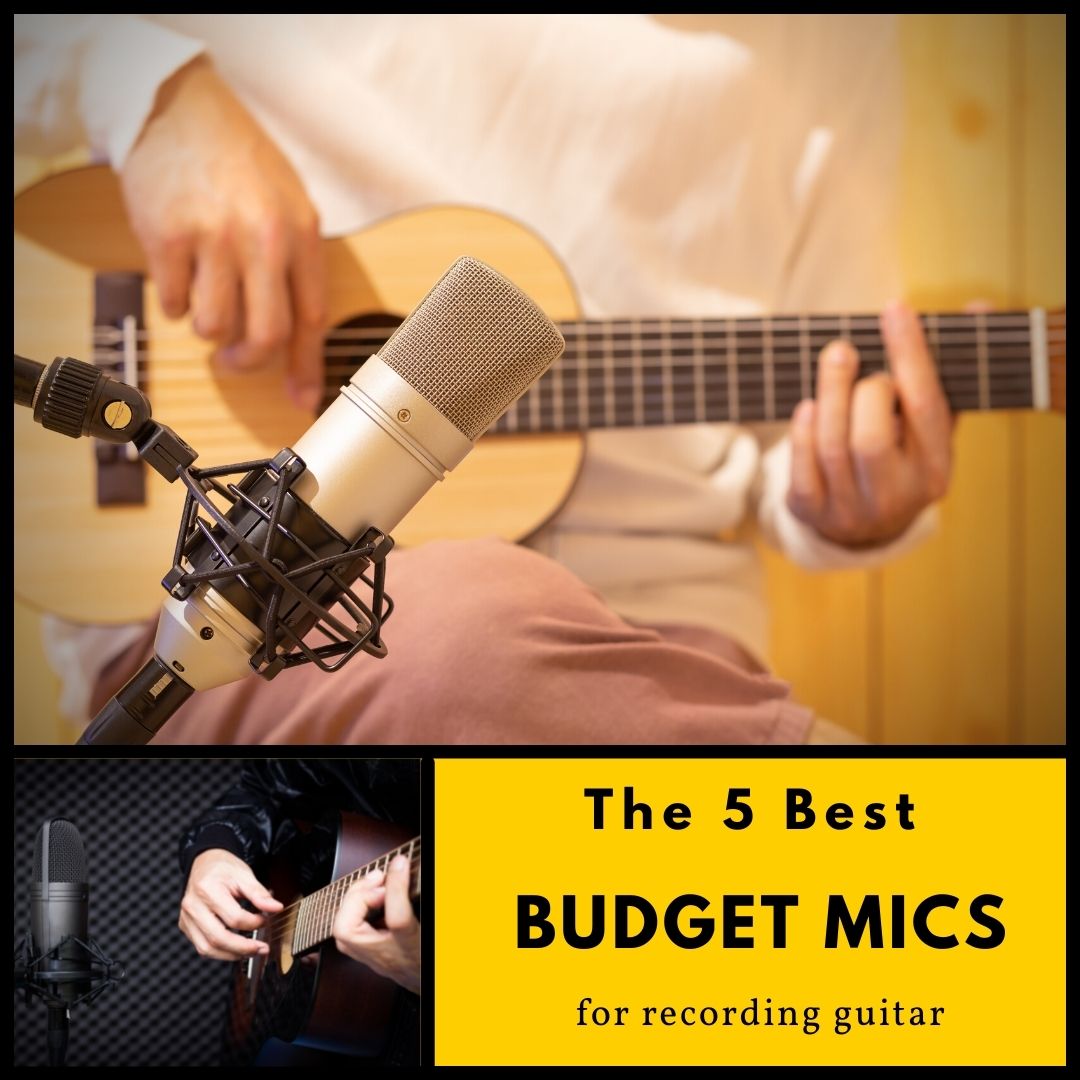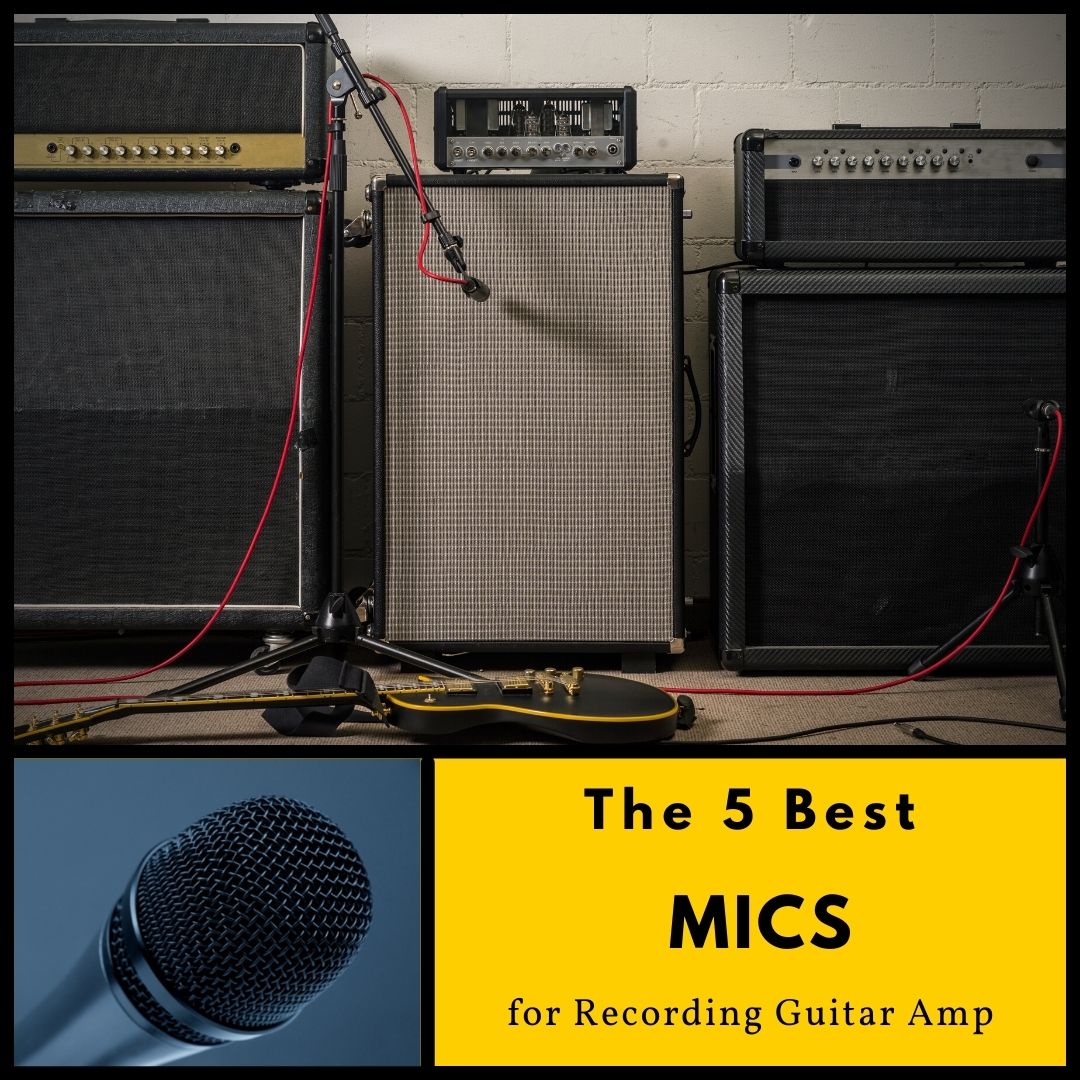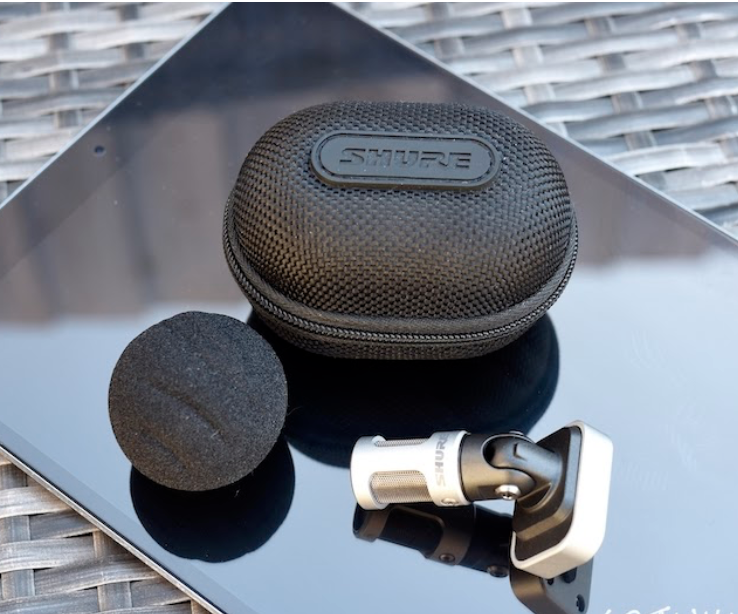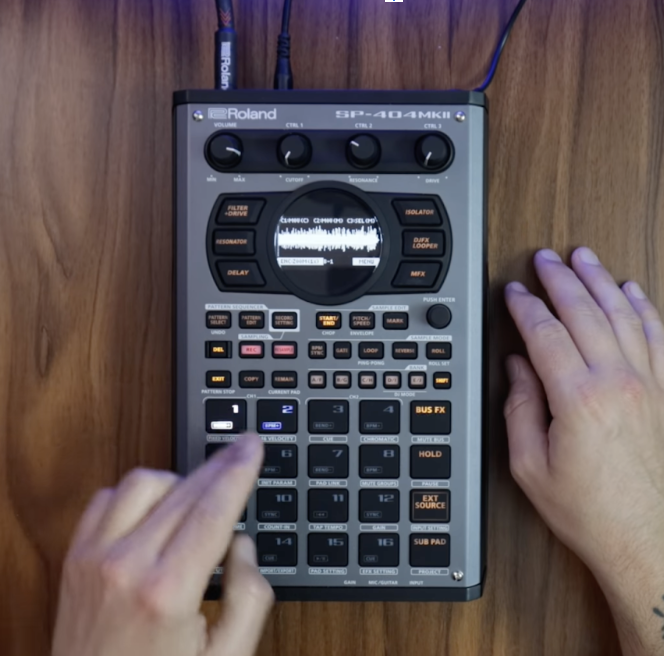
The 5 Best Budget Mics For Recording Acoustic Guitar
September 5, 2021
The 5 Best Mics For YouTube Videos
September 8, 2021
You’ve found the perfect guitar amp for the sound you’re after. You’ve spent countless hours fine-tuning every single frequency, gain-stage and effect, so that the sound coming through the speaker is exactly how you hear it in your head. Now it’s time to track your song, and you want to make sure that nothing gets lost in the transfer.
Here is a cultivated list of some of the best mic for recording electric guitar amp to ensure that you get exactly the tone and character you wanted. These mics span a variety of tonal styles and price points to help you find the one that fits your budget as well as your taste.
Our Recommendation of Best Mic for Recording Electric Guitar Amp
- Sennheiser MD 421 II
- Electro-Voice RE 20
- Shure SM57
- Royer R-10 Ribbon Mic
- Beyerdynamic M201
- AKG C414 XLII
1. Sennheiser MD 421 II

The Sennheiser MD 421 II is a legend. It’s a large-diaphragm cardioid dynamic microphone that has been a staple of recording studios and concert venues for over 60 years. It features a frequency range of 30-17KHz, with a 5-way bass position switch to keep your lower frequencies where you want them.
This mic has been around so long and favored by so many producers because of the evenness with which it captures tones. Its versatility and cardioid directional pattern make it great as a close mic for speakers and capturing room sound. Just about any album produced over the last 60 years has this mic somewhere in the mix.
The MD 421 is a studio workhorse and can be used for everything from percussion overheads to vocals, bass, and guitar amps, as well as ambient room miking. If you need a single, stellar studio mic in the mid-price range to do anything and everything for you, the Sennheiser MD 421 II would be a top contender.
2. Electro-Voice RE 20

Although the Electro-Voice RE 20 is the industry standard for voice broadcasting, studios have been using it to record electric guitar amps for over 50 years. Like the MD 421, it is a large-diaphragm dynamic mic with a true cardioid pattern. It features an internal pop filter and shock mount to eliminate pops and overreaching sibilance.
The RE 20 is notable for keeping unwanted sounds out of the mix. It has an almost mystical ability to capture only the frequencies you want with virtually no off-axis coloration. It also features variable-D response, a patented EV feature that keeps the frequency response even at any proximity.
The RE 20 has a bass-roll off switch to reign in unwieldy low frequencies, and its sturdy metal casing, along with the internal shock mounts, makes this an almost indestructible studio workhorse. It falls in the mid-range price point and is another mic that can be used for a wide variety of recording needs. This is another great option for all-around studio performers.
3. Shure SM57

The Shure SM57 is probably the most universal microphone in all of recording history. You’ve seen these mics in countless studios and live venues, even if you don’t realize it. It is the most widely used microphone ever. Also, at approximately $100 new, it’s the most budget-friendly on the list.
While the SM57 isn’t a standout in any single application, it does everything well and is particularly good at capturing the true tone of an electric guitar amp. Even with the super high-end options available today, the SM57 is often used for close-miking guitar amps and snare drums in both live and recording settings.
It is a uni-directional dynamic microphone. It is simple to use and set up. It works well and can take a beating. With the SM57, you will get a classic guitar tone for your recording at an unbeatable price. Every home studio should have at least one of these.
4. Royer R-10 Ribbon Mic

Ribbon mics have gained popularity over the past 20 years as a go-to option for capturing guitar amp sounds. The main operational difference between ribbon mics and condenser and dynamic diaphragm mics is that ribbon mics work via electro-magnetic induction. In contrast, condenser mics use electrostatic principles to capture soundwaves. In practical terms, ribbon mics work more like a human ear than dynamic and condenser mics.
Ribbon mics give a more natural but potentially unwieldy sound to your recording. For those interested in using a ribbon mic for recording your electric guitar amp, the Royer R-10 has proven to be a steady choice for getting that ribbon mic sound. It features a figure-8 pattern with a frequency range of 30-15KHz.
While many ribbon mics can be difficult to tame given their open frequency properties, the Royer R-10 is surprisingly steady and sturdy, making it ideal for close-mining amplified guitars. It delivers a wide frequency range without becoming loose and untamed and can give your performance a real natural quality.
If you want to try out recording with a ribbon mic, the Royer R-10 would be an excellent first option. Ribbon mics are generally more expensive than dynamic mics, and this one is no exception, but it is well worth the money if you want that special ribbon mic sound.
5. Beyerdynamic M201

The Beyerdynamic 201 dynamic hyper cardioid mic has a particular flavor and is excellent for getting the bright, soaring tones of a clean amp sound. This is a good mic to check out if you want clarity and a bright sheen to your guitar sound.
The 201 has a highly sensitive transient response, which helps accentuate the attack of the note. It has a frequency range of 40-18KHz, and the diaphragm features a unique polymer construction that helps produce its snappy, bright quality.
6. AKG C414 XLII

Last but not least is another mainstay of the studio world, the AKG C414 XLII multipattern condenser mic. The 414 is a true swiss army knife, capable of almost anything you want to get out of it, and it’s simply one of the best sounding microphones ever built.
It employs a large diaphragm with a stunning nine different patterns to choose from. The pattern is highlighted with a green LED that will turn red when it’s being overloaded, so you’ll know when to adjust for optimum performance.
It has a three-way db attenuator to handle everything from whole room sounds to the most intimate close-miking needs. It offers the widest frequency range of all the mics in this article, with a capture field of 20-20KHz.
The AKG C414 XLII is not cheap. It’s the most expensive non-ribbon mic on the list. But, if money is not an issue, you will not find a mic that’s more versatile and user-friendly on this list.
What’s Next?
Guitar sounds are as unique as the individuals who create them, and each of these mics likewise has something unique to offer. Whatever magical sound you’re looking to capture, one of these mics will be the perfect fit for your recording experience.
You may also like,




